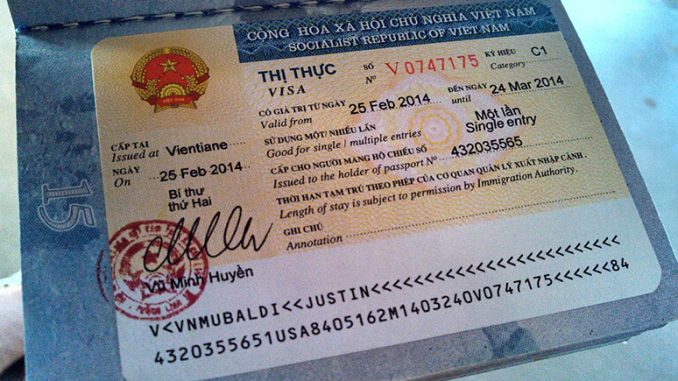Visa applications are an essential part of international travel. Whether you’re planning a business trip, tourism, or even working abroad, understanding the process for obtaining the right visa is crucial. In this article, we will discuss two types of visas: the Saudi Visa Application and the Vietnam Visa on Arrival, covering the steps, requirements, and essential information to help you navigate both visa processes with ease.
What is a Saudi Visa Application?
A Saudi Visa Application is the process that allows foreign nationals to obtain permission to enter Saudi Arabia for various purposes, including tourism, business, or even religious pilgrimages like Hajj or Umrah. The application process can differ depending on the type of visa you are applying for, such as a tourist visa, business visa, or family visit visa.
Types of Saudi Visas
There are several types of visas you can apply for to visit Saudi Arabia:
- Tourist Visa: For individuals wishing to explore Saudi Arabia’s historic and cultural landmarks.
- Business Visa: For people attending business meetings, conferences, or trade-related activities.
- Pilgrim Visa: For those planning to visit Saudi Arabia for religious purposes, such as performing Hajj or Umrah.
- Transit Visa: For travelers passing through Saudi Arabia to another destination.
- Work Visa: For individuals who have secured employment in Saudi Arabia.
Each visa type has its own requirements and application procedures.
Requirements for Saudi Visa Application
To apply for a Saudi visa, applicants must meet certain requirements, which may vary based on the type of visa: VIETNAM VISA ON ARRIVAL
- Valid Passport: A passport with at least six months’ validity from the date of application.
- Visa Application Form: A completed and signed visa application form.
- Photographs: Recent passport-size photographs as per the guidelines.
- Travel Itinerary: A flight booking and accommodation details.
- Financial Proof: Proof of sufficient funds to support your stay in Saudi Arabia.
- Visa Fee: The applicable visa fee based on the type of visa.
- Additional Documents: Depending on the visa type, additional documents such as an invitation letter, religious certificate (for pilgrims), or business-related documents may be required.
How to Apply for a Saudi Visa
The Saudi visa application process can be done online or at a Saudi Embassy. Here’s a step-by-step guide:
- Choose Visa Type: Determine the type of visa you need and make sure you have all the necessary documents.
- Fill Out the Application: Complete the visa application form either online or manually.
- Submit Documents: Submit the required documents to the Saudi Embassy or via the online portal.
- Pay the Visa Fee: Pay the required visa fee through the available payment options.
- Attend an Interview (If Required): In some cases, you may be asked to attend an interview at the embassy.
- Wait for Processing: The processing time may vary depending on the type of visa and your nationality.
- Receive Visa Approval: Once approved, you will receive your visa, either electronically or as a physical stamp in your passport.
What is Vietnam Visa on Arrival?
The Vietnam Visa on Arrival (VOA) is an entry permit issued to foreign nationals upon arrival at certain international airports in Vietnam. This visa is only available for air travelers, and applicants must first obtain an approval letter from the Vietnamese immigration department before arriving.
How Does Vietnam Visa on Arrival Work?
The Vietnam Visa on Arrival process involves a few steps:
- Apply for Approval Letter: Submit an online application to get an approval letter from the Vietnamese Immigration Department.
- Receive the Approval Letter: After processing, you will receive the approval letter via email.
- Arrive at the Airport: Upon arrival at one of the designated airports (Hanoi, Ho Chi Minh City, or Da Nang), present your approval letter, passport, and required documents.
- Pay Visa Stamping Fee: Pay the stamping fee at the airport to get your visa stamped in your passport.
- Receive Your Visa: After the payment and processing, you will receive your Vietnam visa and be allowed to enter the country.
Requirements for Vietnam Visa on Arrival
To apply for the Vietnam Visa on Arrival, the following documents and conditions are required:
- Valid Passport: Your passport must have at least six months of validity.
- Visa Approval Letter: An approval letter issued by the Vietnamese immigration department.
- Passport-sized Photos: At least two passport-sized photos, as per the requirements.
- Visa Stamping Fee: The stamping fee, which can be paid in cash upon arrival.
- Travel Details: Information about your stay, such as accommodation details and flight bookings.
Advantages of Vietnam Visa on Arrival
- Convenience: You can apply online for the visa approval letter and collect the visa upon arrival, making it a quick and easy process.
- No Need to Visit Embassy: The process eliminates the need to visit a Vietnamese embassy, which can be time-consuming.
- Flexible: The Vietnam Visa on Arrival offers flexibility for tourists who decide to visit Vietnam last minute.
Disadvantages of Vietnam Visa on Arrival
- Only Available for Air Travel: This visa is only applicable to travelers arriving by air and is not available for land or sea travelers.
- Extra Costs: You may need to pay additional fees at the airport for visa stamping.
- Limited Duration: The Vietnam Visa on Arrival is typically valid for short stays, up to 30 days.
Vietnam Visa on Arrival vs. Traditional Visa
While both options allow entry into Vietnam, the Vietnam Visa on Arrival offers several benefits in terms of convenience. However, traditional visas from the Vietnamese Embassy may be better for those traveling overland or who need a longer visa validity.
Traditional Visa Process
The traditional visa process involves visiting the nearest Vietnamese embassy or consulate to submit your application. This process typically takes longer and requires more paperwork but is suitable for travelers who plan to stay in Vietnam for longer durations or travel overland.
Conclusion
In summary, both the Saudi Visa Application and the Vietnam Visa on Arrival offer different advantages and are tailored to different types of travelers. Whether you’re planning a business trip to Saudi Arabia or a quick vacation in Vietnam, understanding the specific visa requirements and application process will make your travel plans smoother and stress-free.

